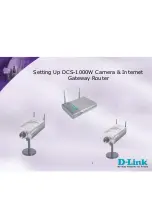
127
FR traffic policing
FR traffic policing monitors the traffic entering the network from each PVC and restricts the traffic
within a permitted range. If the traffic on a PVC exceeds the user-defined threshold, the device takes
some measures, like packet drop, to protect the network resources.
Figure 47 FR traffic policing implementation
As shown in
, Router A at the user side transmits packets at the rate of 192 kbps to Router
B at the switching side. However, Router B only wants to provide the bandwidth of 64 kbps for Router
A. Therefore, you must configure FR traffic policing at the DCE side of Router B.
FR traffic policing can only be applied to the DCE interface of a device. FR traffic policing can monitor
the traffic transmitted from the DTE side. When the traffic is smaller than CBS, the packets can be
transmitted, and the device does not process the packets. When the traffic is larger than CBS and
smaller than EBS + CBS, the packets can be transmitted. However, as for those packets of the traffic
exceeding CBS, the device sets the DE flag bits in the FR packet headers to 1. When the traffic is
larger than CBS + EBS, the device transmits the traffic of CBS + EBS and drops the traffic exceeding
CBS + EBS. As for the traffic exceeding CBS, the device sets the DE flag bits in the FR packet
headers to 1.
FR queuing
Besides FR PVC queues, FR interfaces also have interface queues. With FRTS disabled, only FR
interface queues take effect, and the predefined FR PVC queues take effect only in the case that
FRTS is enabled.
The relationship between PVC queues and interface queues is shown in
.
Figure 48 FR queuing
For 6600/HSR6600 routers, only FIFO queuing is available on FR interfaces.
Содержание FlexNetwork 6600
Страница 106: ...99 Rule s If match acl 2000 Behavior behavior_1 Accounting Enable 28529 Packets ...
Страница 146: ...139 Figure 53 Implementing HQoS through interface level hierarchical CAR ...
Страница 147: ...140 ...
















































